Your Honor, now that the jury has seen the exhibits concerning Petrocelli’s inception—specifically the big-screen The Lawyer and the made-for-TV movie Night Games, let us proceed to Petrocelli’s first season.
By Paul Mavis
When it premiered on March 16th, 1974, made-for-TV movie pilot Night Games must have pulled in enough viewers for NBC to give producers Edward Milkis and Thomas Miller the greenlight to adapt it into a series.
Click to order Petrocelli: The Complete Series on DVD:
(Paid link. As an Amazon Associate, the website owner earns from qualifying purchases.)
The producers moved themselves into an executive position and hired veteran producer/writer Leonard Katzman (The Wild Wild West, Gunsmoke) to actually oversee the making of the series. I haven’t come across any background on why, exactly, The Lawyer was chosen four years later as the basis for a potential TV series, but one might surmise, after seeing the TV landscape that 1973-1974 season, that The Lawyer’s lead character’s ethnicity was a big, big draw.
At this time the networks, very slowly following the societal changes that were rapidly transforming the face of American pop culture, realized that a convenient way to kill two birds with one stone—making network TV a little less WASPy while re-invigorating tried-and-true series formulas—was to emphasize (just a bit…) the ethnicity and religions of their series’ fictional characters. Ironically, smash hit All in the Family’s race-obsessed Archie Bunker opened the door for this kind of exploration (and exploitation) on the small screen, and finally made it acceptable to a wide audience. There were earlier isolated attempts, like Burt Reynold’s 1966 cop show, Hawk, where he played a full-blooded American Indian detective, but they didn’t catch on.
Soon after All in the Family hit big, a slew of series starting popping up featuring lead characters that didn’t look and/or sound like 99.9% of the rest of American TV: Sanford and Son, Shaft, and Tenafly (African-American), Banacek (Polish-American), Toma (Italian-American), Kung Fu (Asian character/White actor), Bridget Loves Birney (Catholic-American/Jewish-American), Kojak (Greek-American), and of course Angie Dickinson’s Police Woman (Piece-of-Ass-American). When Italian-American Petrocelli premiered in the fall of 1974, he was eventually joined on the airwaves that season by detective Khan (Asian-American) and cop Nakia (American Indian). Since The Lawyer’s script frequently referenced Petrocelli’s ethnicity, and how that rubbed his Southwestern neighbors the wrong way, perhaps that element of the movie stuck in producers Miller’s and Milkis’ head, and made it seem a good prospect for the current TV times. Hard to say (Barry, give me a call at the Drunk TV offices, and you can fill me in…but don’t call on Mondays).
For this first season of Petrocelli, the producers didn’t stray far at all away from their two movie inspirations. Big city lawyer Tony Petrocelli (Barry Newman) has come to small Southwestern town San Remo (they filmed on location in Tucson, Arizona) with his smart, pretty, loving wife Maggie (Susan Howard), to open up a small, struggling law office over a Navajo Indian jewelry store. While trying to make ends meet with small time divorce cases and chump change civil suits, Petrocelli has a knack for acquiring high-end clients who are being framed for murder. Because he’s about caring and not (so much) about money, he puts everything into his investigations of the crimes, along with the help of cowboy investigator Pete Ritter (Albert Salmi). While various D.A.s are sure they’re going to beat the wily Petrocelli, a careful alternate version of the crime is narrated by Tony in court, which inevitably leads to “reasonable doubt,” and a dismissal of charges.
RELATED | ‘The Lawyer’ (1970): Petrocelli on the big screen
RELATED | ‘Night Games’ (1974): Petrocelli returns…on TV
RELATED | ‘Petrocelli’ (Season 2): The final courtroom battle
Considering the era in which it was produced—Watergate and Nixon’s resignation that summer, a big recession, the lingering after-effects of the counter-culture on the mainstream—one might expect Petrocelli, in an effort to more distinguish itself from previous formulaic lawyer/mystery series, to punch up the cliched societal tropes of the new “Me Generation.” They’re there, but thankfully quite muted : the mystery is the thing here, and surprisingly, the romance. Sure, someone warns Maggie not to let Tony get too rich. And when Maggie asks Tony why they’re out in the backwaters of the desert and not in the rat race, he simply commands, “Smell,” (those fast-fading hippies loved that…).
For the most part, though, Petrocelli ditches heavy-handed, then-trendy references to “selling out” or “getting back to nature,” concentrating more on the mysteries, while getting them across with some visual panache. Wisely keeping the Rashomon-like flashback gimmick from the first movie as its key storytelling framework, Petrocelli’s formula, though a bit rigid, works every time. Tony gets an unlikely client charged with murder, who details, in flashback, what happened. Tony then hears from a witness or the D.A. or the cops (frequently David Huddleston as Lieutenant Ponce) what they think happened, through a different-version flashback. Tony, with Maggie’s and Pete’s help, tracks down witnesses and clues that give a different story, and in grand jury, inquest, or arraignment hearings, Tony gives his possible version of events, through a final flashback, thereby creating reasonable doubt, and a happy client. Petrocelli’s flashbacks are a satisfying gimmick (not meant as a pejorative at all) that give the traditional whodunit structure a bit of a nudge, along with some bit visual punch.
Of course much of the legal maneuverings here look suspicious, at best (we didn’t care—we used to watch TV to be entertained, not “enlightened” or “educated”). And a few hitches may nag at you if start adding them up (if Tony keeps saving all these rich clients…why are he and Maggie and never-paid Pete forever bitching about having no money?). But those are minor quibbles. The scripts for Petrocelli may seem a bit fixed in their development, but they’re usually well-written in terms of the mysteries and the dialogue (the reoccurring comedic bit of Petrocelli trying to beat the parking meters gets old, though…the cops in San Remo don’t know him and his truck after awhile?).
Surprisingly, what I found as interesting as the mystery element was the quietly intense romantic relationship between Tony and Maggie, much of which is owed to Newman’s and Howard’s skills and chemistry together. I’m crazy about Diana Muldaur from The Lawyer…but only when I want a cool, distant, ever-so-slightly sneering actress. Susan Howard is the opposite of that on screen: warm, close, smiling. She plays quite well off gruff, macho Barry Newman. The producers aren’t afraid to show this good-looking couple being physically affectionate with each other (studly 70s macho man Newman often has his shirt off, while beautiful Howard looks good in anything), nor do they shy away from having them verbalizing their feelings. In one episode, Howard bends over at their home site (two locations which bizarrely ping-pong back and forth throughout this season, in a bad continuity error), picking up a brick, and the camera lingers there, cutting to an appreciative Newman stating, “Judging by past performance, I could be arrested for what I’m thinking right now.” It’s a funny moment, but it’s not, surprisingly, leering or dirty, because the producers have so often shown the couple telling each other how much they love each other, in simple words and in gestures. It’s an openly romantic, loving marriage, and we buy it largely because of Howard and Newman.
Petrocelli was a relatively expensive show for NBC to produce, considering its extensive location shooting in Arizona and the unusually large salary allotted to Barry Newman: $20,000 an episode (over $100k today). Not bad for a “failed” movie actor who wasn’t exactly an A-list name with average TV viewers. So NBC was expecting a lot when it programmed it on Wednesday nights at 10:00pm. Leading off NBC’s schedule was a new hit that boded well for Petrocelli’s chances: Nielsen Top 15 hit Little House on the Prairie, at 8:00pm. Unfortunately, Petrocelli’s immediate lead-in at 9:00pm, the sappy, awful teacher drama, Lucas Tanner with David Hartman (bleech), pretty much erased that numbers run-up, since it had NBC viewers clicking off in droves to watch CBS’s highly-rated Cannon. Still, Petrocelli managed to fend off its direct 10:00pm competition and win its time slot for the year. ABC’s tamed, toned-down Get Christie Love! blaxploitation actioner barely made it through the season (they didn’t even re-run it in the summer; The Jim Stafford Show summer variety series was plugged in), while CBS’s unlikely period private eye outing from Quinn Martin, The Manhunter, with Ken Howard as a Depression-era gumshoe from…Idaho (fun!…), dropped like a 100-pound potato throughout the season (it, too, wasn’t re-run in the summer—they dragged out old Dan August re-runs because of Burt Reynolds’ big movie hit, Deliverance, followed by Mannix re-runs). Petrocelli survived for another season…but just barely.
Here are the 22 episodes from the first season of Petrocelli:
DISC 1
The Golden Cage (September 11th, 1974)
Petrocelli defends a rich trophy wife accused of murder.
The series opener, directed with some zest by vet Joseph Pevney (Cagney’s Man of a Thousand Faces). Big cast of solid pros for this one, including Joseph Campanella (good playing vicious), Rosemary Forsythe, Morgan Woodward, and William Windom earning some eating money in a small role. Thank god they didn’t keep barkeep Rose Marie as a supporting player. Woodward, always terrific, essays another memorably nasty villain, calling Maggie a tramp and stating, “I could do things to you that wouldn’t leave a mark.”
Music to Die By (September 18th, 1974)
A country singer finds his career—and life—in jeopardy when a man he had an argument with, turns up dead.
Petrocelli gets his first call from his unseen Mama (let’s keep it that way…). Another good cast, including Jeremy Slate, David Doyle, and introing David Huddleston as Lt. Ponce, Petrocelli’s nemesis/sorta friend. Too bad poor Ricky Nelson can’t act—it’s a pretty good mystery from scripter Oliver Crawford. And what’s with the different home site for the Petrocellis?
By Reason of Madness (September 25th, 1974)
Petrocelli tries to prove his client, a woman who murdered her husband, was mentally ill.
Newman has one of his best D.A. adversaries here in John “Dean Wormer” Vernon (“The time has come for someone to put their foot down. And that foot is me,”). Too bad it’s a one-off for the terrific actor. Another great cast here, including James McEachin (could have been a good returning supporting player, too), Loretta Swit (what’s she doing here in such a small part?), and guest murder victim, Rory Calhoun. Lynda Day George knocks it out of the park as the crazed suspect (who can blame her for ice-picking Calhoun for humming?). The tricks that Petrocelli pulls in the courtroom—without a whisper of objection from the various D.A.s—are laughable…but highly enjoyable.
DISC 2
Edge of Evil (December 8th, 1979)
Tony defends a man accused of killing his best friend.
Shatner! That’s enough, right? No? Then…Harrison Ford as the leader of a bunch of humorless consumer advocate goons! The way the killer implicates Shatner—throwing his gun which Shatner snags in mid-air!—is pricelessly dumb. That western shirt looks uncomfortably tight on sweaty Shatner (it’s the toup—they don’t breathe). Dana Elcar is solid as the D.A., and Glenn Corbett is boring, as expected. Tony says the “law is beautiful.” Right.
A Life for a Life (October 9th, 1974)
Petrocelli takes the case of a young man accused of arson and murder.
A dull episode from scripters William D. Gordon and James Doherty—the first misfire of the season. The cast has nothing to do: John Anderson does his usual shtick; talented Sharon Farrell has a small, nothing part; Geoffrey Deuel never could hack it; and all-time favorite Henry Jones (“I ain’t got dem shoes!”) is completely wasted here.
Death in High Places (October 24th, 1974)
A spoiled heiress is blamed for the death of her wealthy father in an attempt to cash in on her inheritance.
Richard Donner helms this one, and it’s worth the price of admission alone for exploitation god Cameron Mitchell’s overripe turn as a sadistic sheriff (god why couldn’t they keep him on the show?). Newman seems to be having fun playing off such a gorgeous ham (they have a hilarious bit where Petrocelli reminds the sheriff that he’s unzipped). Harold Gould comes by as the guest D.A. (and he’s much better than in The Lawyer, this time sticking with his established persona). Salmi’s Pete gets busted for being a drunk (Salmi, a seriously underrated actor, wasn’t given nearly enough to do in this series—a shame). And that actor who played Bobby? Gee-zus.
The Double Negative (October 30th, 1974)
A trail of blackmail is discovered when a private investigator is murdered.
So-so mystery from Robert C. Dennis. Fritz Weaver gives the same performance he gave in 735 other TV shows, while Michael “Blue Boy” Burns (“There I am! I’m over there now! I’m not here anymore. My hair’s green and I’m a tree!”) gets to flip out again. Miss Golden Globes of 1976, Lisa Farringer, is believable as a porn actress.
DISC 3
Mirror, Mirror on the Wall… (November 6th, 1974)
Contrary to many eye-witness accounts, Tony’s client insists she was not at the scene of a murder.
Stefanie Powers can do no wrong, particularly when embodying one of television’s all-time greatest tropes: the evil twin! A satisfying mystery, written by series producer Leonard Katzman, with Harold Gould back again as the D.A. (were they trying out rotating guest D.A.s, or were they testing potential permanent slots?). Erica Hagen looks insane in that bikini….
An Act of Love (November 13th, 1974)
Petrocelli is on the case when the daughter of a powerful senator is found dead.
Petrocelli gives us not one but two possible flashbacks in this entertaining episode. Steak’s too expensive for the Petrocellis, so it’s hot dogs again (welcome to the mid-70s), and Tony’s still trying to cheat the parking meters, this time with a “dead battery” sign. Notable for a sustained shot of Susan Howard’s rear end (it’s an 8), and for the appearance of another icon of 70s exploitation: sexy Christina Hart (The Stewardesses, Helter Skelter). John David Carson is hopeless, but John Marley is always fun to watch. Petrocelli says the law is blind. Right.
A Very Lonely Lady (November 27th, 1974)
A hitchhiker, who spent the night with the woman who picked him up, is accused of murder.
One of the best entries this season, written by Robert Stull and directed by live-action Disney pro Vincent McEveety (The Strongest Man in the World, Gus), who delivers some creepy, intense flashback sequences. Lou Gossett, Jr. is the guest D.A., and he’s right on the money: excellent line readings and real loose with Newman (he would have been a great addition to the series). Spock’s wife Arlene Martel looks sexy as hell here, but I most enjoyed the marvelous Lucille Benson as dippy hairdresser Angie (did they put Sandy Duncan’s wig on her?). Newman gets the episode’s best line as he sends his hitchhiking client on his way: “Next time…take the bus.”
Counterploy (December 4th, 1974)
A cop is charged with murdering his wife’s lover when he is found over the dead body with a revolver in hing.
Petrocelli gets some fisticuffs in for this solid entry, well directed by James Sheldon (good, spooky hand-held stuff during the flashbacks). Arnold Jeffers continues to score as Petrocelli’s difficult Judge Maitland, while the producers flub a chance to use the always amusing Hayden Rorke as the guest D.A. (instead, he’s just another lawyer). Too fine Gaye Houston looks pretty 70s with that feathered hair…
A Covenant with Evil (December 18, 1974)
A mentally-disabled man is accused of murdering a woman who was raped and killed.
Very good mystery (from five scripters, no less), although I’ve never been a fan of Charlie Martin Smith (just can’t watch him. Sorry). Robyn Millan, of the classic drive-in opus, The Witchmakers, is one of this season’s more attractive corpses, while familiar face Paul Carr has a nice part as a Western stuntman.
DISC 4
The Sleep of Reason (January 15th, 1975)
A professor is shot during a class lecture, but the shooter doesn’t remember anything about it.
Excellent twist on The Manchurian Candidate from writer William Kelley (Witness). Christopher Connelly is just right as the hypnotized killer (why didn’t he have a bigger career?), while personal favorite Pamela Franklin is equally good as his friend (but what’s with that frumpy hairdo, Madge?).
A Fallen Idol (January 22nd, 1975)
An over-the-hill boxer, and Tony’s high school idol, is accused of beating his manager to death.
Producer Leonard Katzman gives us another take on the old “washed up boxer” story, given a bit of a lift this time around due to another favorite of mine, Don Stroud (that guy should have had Christopher Walken’s career). Beautiful Susan Strasberg admirably dowdies down, in another good turn, with Louis Gossett, Jr. back again as the D.A..
Once Upon a Victim (January 29th, 1975)
A doctor is charged for the murder of the woman who founded his clinic.
For some reason, Barbara Rhodes demonstrates belly dancing in this episode. I’m not complaining—I love that big, gorgeous redhead—but what her character is doing here I have no idea. Alan Fudge is the visiting D.A. (as a kid I always loved to pick this talented but anonymous actor’s name out of the credits…because it’s such a memorably un-actorly name). Good actor John Dehner phones in his role, while marginal actress Della Reese seems bored with the whole thing. Poor, bill-ravaged Petrocelli donates half his fee to some clinic. Right.
The Kidnapping (February 5th, 1975)
A woman who kidnapped her son from her father-in-law, a powerful senator, is accused of murdering his secretary.
Petrocelli loses a small claims court case! Kim Darby headlines this one. Yeah, not a favorite…. Gene Evans does well, though, as her crusty father-in-law (how many power-mad senators does Petrocelli run into this season?) I had to look twice to see if that really was Dick Davalos as the guest D.A. (yikes—get some sun and lay off the fried foods). Explain again to me how Darby isn’t guilty of at least manslaughter, when she whacked the victim with a bat…and then minutes later the victim stumbled into the pool and whacked her head on same said bat? Even I could win that case against Petrocelli….
A Lonely Victim (February 19, 1975)
Petrocelli defends a woman when a romantic triangle comes to a violent end.
What? Lt. Ponce is now Petrocelli’s friend? And what’s with all these suspects picking up the murder weapons, conveniently depositing their fingerprints on them? Oh, well—at least this one has Anjanette Comer in a slip (she always came across on the screen—should have had a bigger career). The producers save a couple of bucks by lifting a previous “Tony cheats the meter” scene. Tacky.
DISC 5
The Outsiders (February 26th, 1975)
Petrocelli investigates why a young man from out of town is accused of murdering a local pharmacist.
A sad little outing from producers Katzman and Miller, with an excellent mystery angle. The marvelously funny Lucille Benson returns, this time in a serious role as a poor sharecropper, and she’s terrific: quiet, dignified, and fully aware of how she’s ultimately at the mercy of strangers since she’s dirt poor (I’ll admit it: that wonderful old broad choked me up at the end of this one). Happy Days’ Marion Ross is just as impressive in a one-scene turn as a widow who is both grieving and angry at a husband who neglected business to help others.
Vengeance in White (March 5th, 1975)
Petrocelli needs more than faith when he defends a preacher’s wife, who is accused of killing her husband’s manager.
An unconvincing outing from Robert Stull. The mechanics of the murder itself are clunky, and that verkakte cast—except for nasty Ken Swofford—is strictly from hunger (Michael Anderson, Jr.? Playing an evangelist that mesmerizes people? Cripes). Elinor Donhue? Never understood that whole thing…. Hey! Maggie brings home the Colonel for supper!
Four the Hard Way (March 12th, 1975)
Three eccentric old men hire Petrocelli to defend their friend who is charged with killing his son-in-law.
A big winner this season, from William Kelley, directed with an eye towards a lot of laughs from Joseph Pevney. A first-rate cast, including John Crawford and William Bryant (smooth, smooth delivery as a guest cowboy D.A.—would also have been great as a regular supporting character), is backed up by four Western pros: Strother Martin, Paul Brinegar, Eddie Firestone, and Shug Fisher. These four are pros at getting laughs, which they consistently do here. Pneumatic Gloria LeRoy shows up as a stripper, and Salmi has a great scene acting realistically drunk (who knows?). And finally, we get a D.A. who objects to Petrocelli’s antics, and an actual verdict. We also get both of Petrocelli’s home sites here (continuity, please…). Newman doesn’t look too comfortable on that horse.
Death in Small Doses (March 26th, 1975)
A teenage boy is accused of murdering his grandfather’s attractive nurse.
This one looks like it was shot first: few Arizona locations; Petrocelli’s got short hair; everyone’s making fun of his “Eye-talian” name, and a lot was lifted from The Lawyer. I love Robert Mandan…but he just can’t pull off a nasty, bullying sheriff. Good creepy actors Michael Baseleon and Paul Shenar help some. How did George O’Hanlon, Jr. have a career? And how weird is it to see Lou-Ann Poovie come on to him?
A Night of Terror (April 2nd, 1975)
Petrocelli defends a mobster’s girlfriend who, after being knocked unconscious, awakens to find him dead and the murder gun in her hand.
Another Hollywood set-bound episode (that murder house was used in about 100 different 60s and 70s TV episodes). Alan Fudge is back (it was fun the first time, and that’s all). Over-talented Lois Nettleton looks as if she’s acutely aware of how off-the-track her once-promising career has gone (skilled Peter Mark Richman, on the other hand, does what he always does: gets out there and acts, and screw the fact that it’s a crap script). Morgan Woodward returns as a mafia kingpin (that guy is the goods).
A short note about the A/V aspects of VEI’s Petrocelli: The Complete Collection. VEI runs a disclaimer at the start of each disc, noting that best available materials were used for the transfers, and thus, the image and sound might not be optimal. Fans of vintage television, however, won’t even blink at these full-screen, 1.33:1 color transfers. Sure, the color can appear washed out or muddy at times (no doubt because of the age of the original materials used for the transfers), but the image itself is quite bright and sharpish, with tight grain. The mono audio track is entirely serviceable: low hiss and all dialogue clean and surprisingly crisp. Considering these transfers were most likely not taken from original camera elements, Petrocelli: The Complete Collection looks just fine.
Read all the reviews in our 4-part Petrocelli series.
Read more of Paul’s TV reviews here. Read Paul’s film reviews at our sister website, Movies & Drinks.

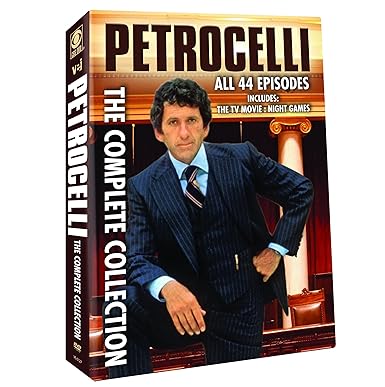








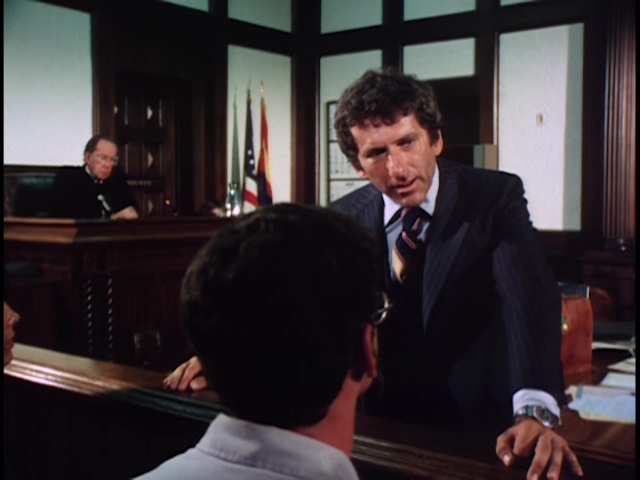
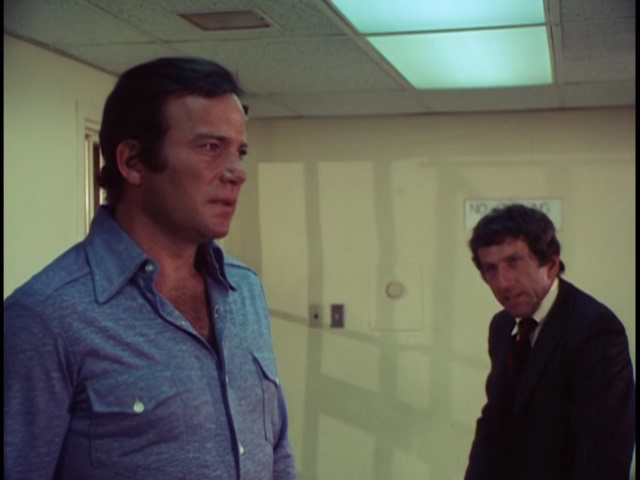



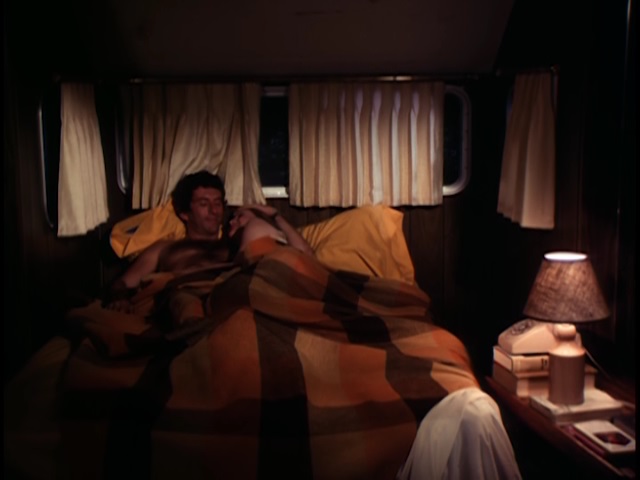
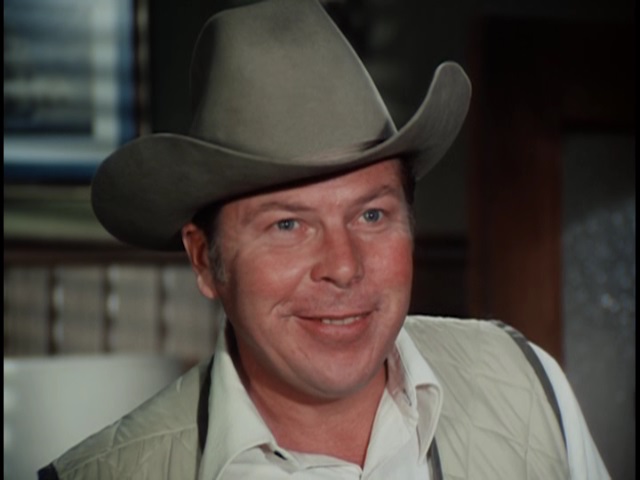





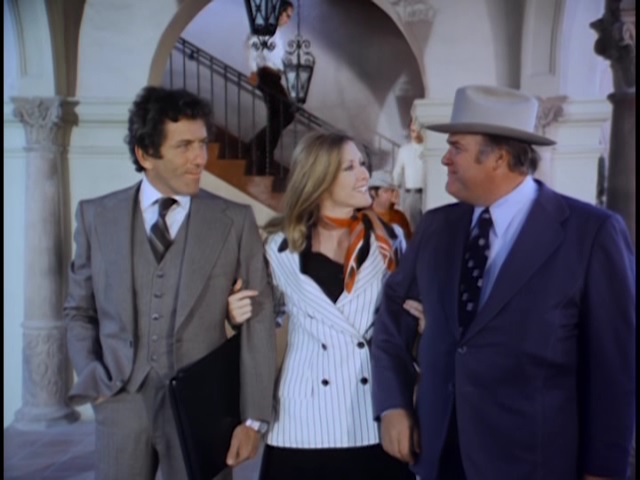




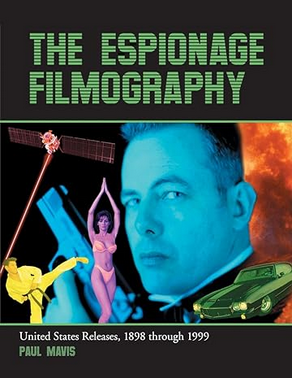
I bought the series recently, and I have been enjoying them. I was a kid about 13 when they were first on the air, and I remember enjoying the shows and the terrific relationship between Tony and Maggie. Kudos to your articles on the movie and tv pilot and the 44 episodes made.
LikeLiked by 2 people
Thanks for the kind words — glad you enjoyed them
LikeLike